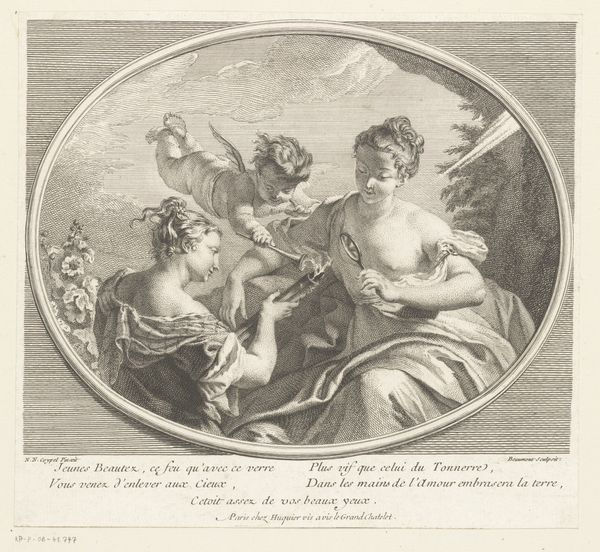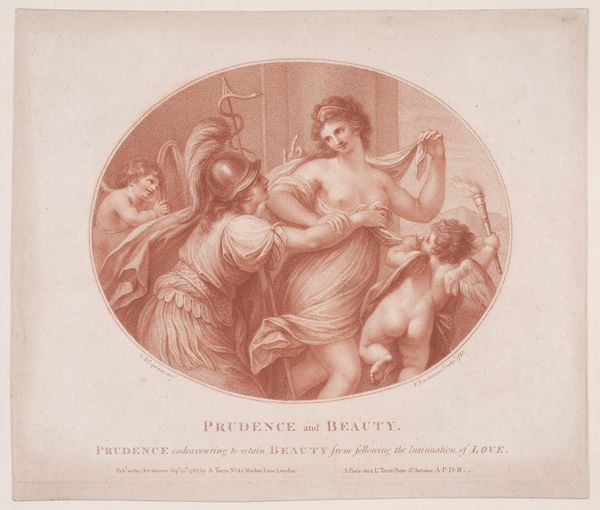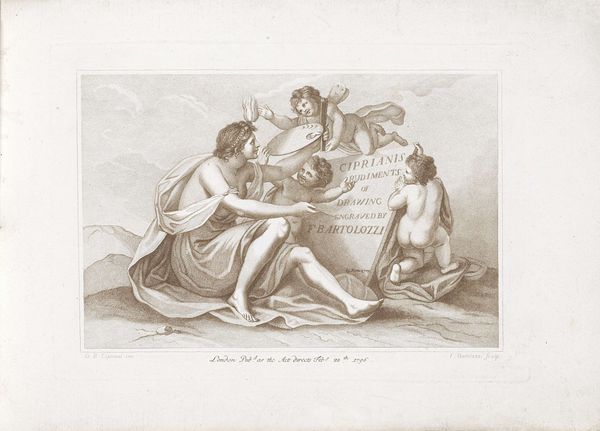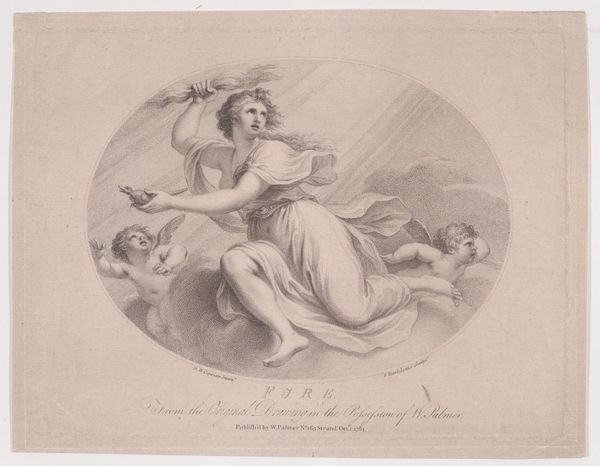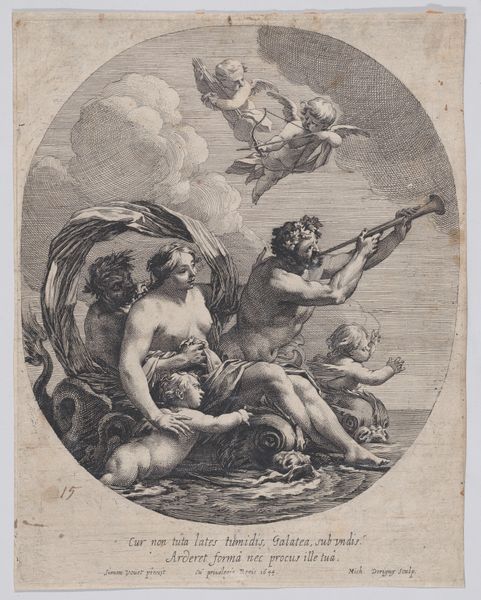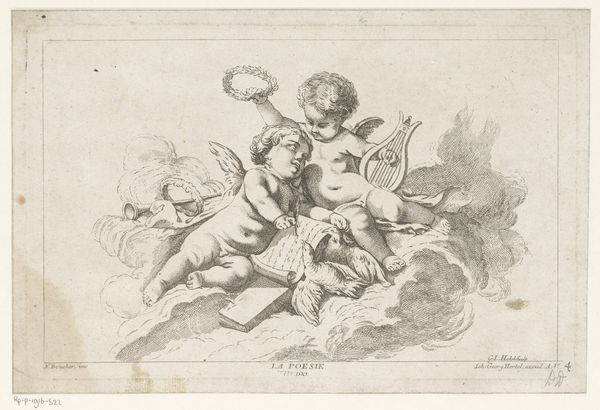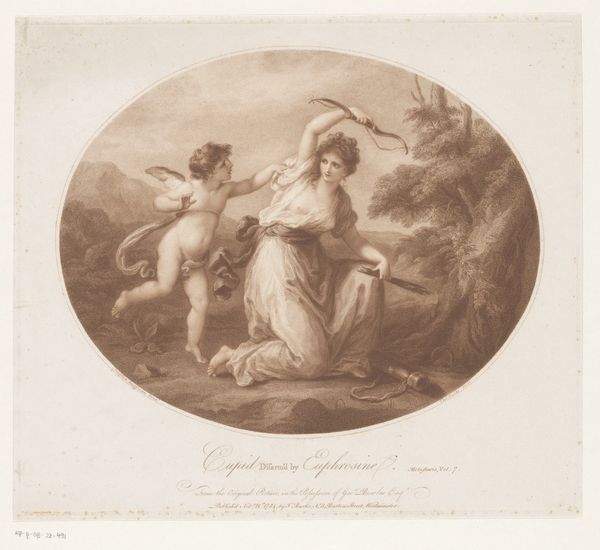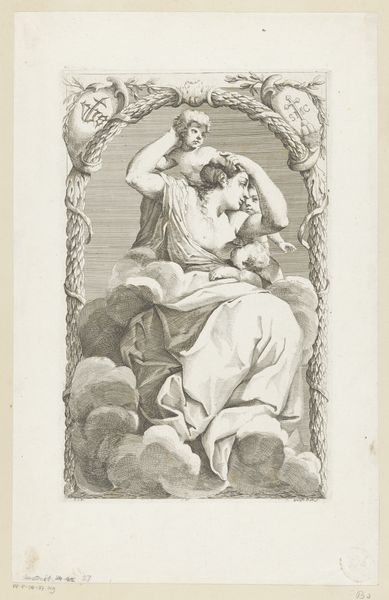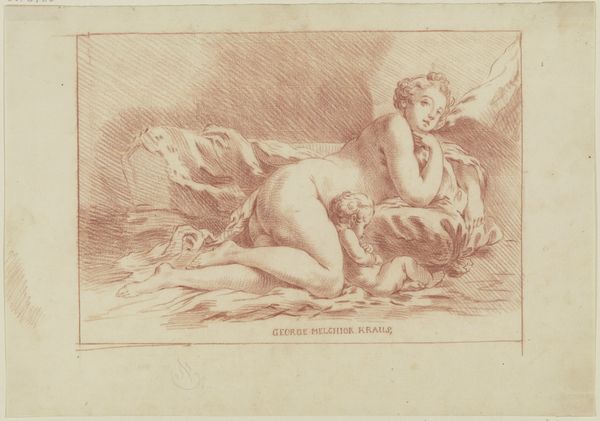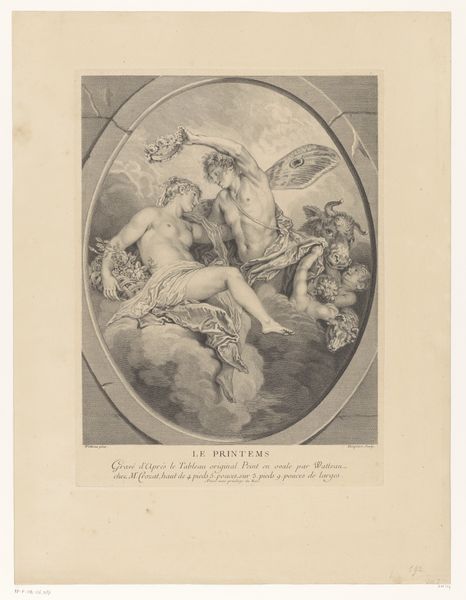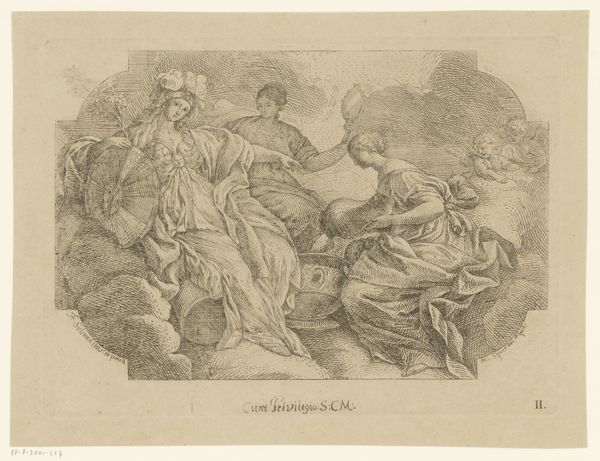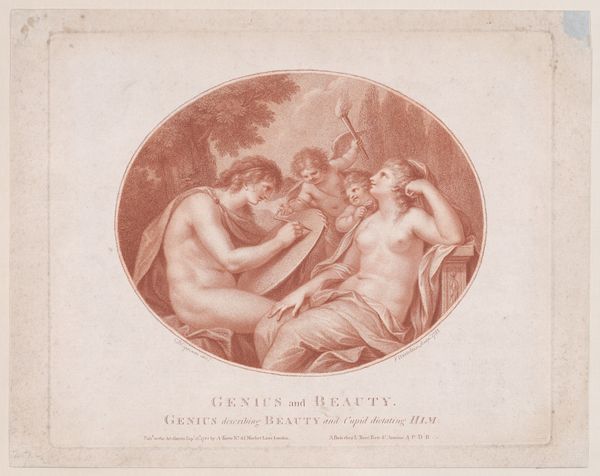
drawing, print, engraving
#
drawing
#
neoclacissism
#
allegory
# print
#
classical-realism
#
figuration
#
history-painting
#
engraving
Dimensions: Sheet: 7 7/8 × 10 3/16 in. (20 × 25.9 cm)
Copyright: Public Domain
Editor: This is Francesco Bartolozzi's "History," made in 1786. It looks like an engraving. The winged figure of History, is quite serene and powerful at the same time. How do you see the historical context influencing this artwork? Curator: From a materialist perspective, let’s consider the printmaking process itself in 1786. Engraving demanded skilled labor and access to specific materials – copper plates, inks, and the tools of the engraver. How did this labor and those resources shape the *kind* of history being produced and consumed here? Was this readily available to the masses? Editor: So, you're saying the *production* of this image affected *how* people viewed history? Curator: Exactly! This wasn't just about representing a grand narrative. It's about the means of *making* that narrative accessible and how that impacted its authority. Neoclassicism, prevalent at the time, borrowed from the aesthetics of ancient Greece and Rome, but it did so through the specific industrial and economic context of the late 18th century. Who had access to the knowledge of classical forms, who controlled the means of production, and who consumed this image? These factors reveal the social fabric intertwined with artistic creation. How does that change your perspective on the piece? Editor: That's fascinating. I hadn’t considered how the actual engraving process would play into shaping historical perception. Curator: The materiality and method of production are fundamental! They reveal how cultural ideas were formed and disseminated during the period. Looking closely at artistic production allows us to look closely at who benefitted from it, and what meanings get perpetuated by its existence and widespread accessibility. Editor: I see history not just in the image but in the means of creating it, and that makes the work itself speak more loudly about its time. Thank you for providing me a deeper perspective. Curator: Indeed. Recognizing the conditions of production expands our appreciation, bringing to light power dynamics and hidden social commentary within seemingly straightforward artworks.
Comments
No comments
Be the first to comment and join the conversation on the ultimate creative platform.
